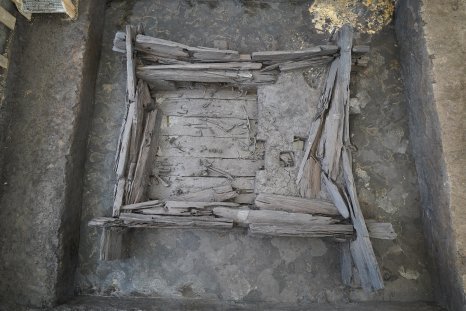Your support helps us to tell the story
Support NowThis election is still a dead heat, according to most polls. In a fight with such wafer-thin margins, we need reporters on the ground talking to the people Trump and Harris are courting. Your support allows us to keep sending journalists to the story.
The Independent is trusted by 27 million Americans from across the entire political spectrum every month. Unlike many other quality news outlets, we choose not to lock you out of our reporting and analysis with paywalls. But quality journalism must still be paid for.
Help us keep bring these critical stories to light. Your support makes all the difference.
Ancient life on Earth might have thrived after a meteorite four times the size of Mount Everest crashed into the planet, research suggests.
Billions of years ago meteorites hit the planet frequently, and one such space rock crashed down about 3.26 billion years ago.
These events – which can cause the sea to boil, or a blanket of dust to block sunlight from reaching plants – are usually considered to be disastrous for life.
What this study is highlighting is that these impacts would have had benefits to life, especially early on
Professor Nadja DrabonHowever, experts suggest the conditions caused by the impact of the S2 meteorite, which had a diameter of 37–58 kilometres, might actually have caused certain life forms to bloom.
Nadja Drabon, an early-Earth geologist and assistant professor in the department of Earth and planetary sciences, University of Harvard, USA, said: “We think of impact events as being disastrous for life.
“But what this study is highlighting is that these impacts would have had benefits to life, especially early on … these impacts might have actually allowed life to flourish.”
The S2 meteorite is estimated to have been up to 200 times larger than the one that killed the dinosaurs.
Analysis suggests it triggered a tsunami that mixed up the ocean and flushed debris from the land into coastal areas.
Heat from the impact caused the topmost layer of the ocean to boil off, while also heating the atmosphere, and a thick cloud of dust blanketed everything, experts say.
But according to the research, bacterial life bounced back quickly, and with this came sharp spikes in populations of single-celled organisms that feed off the elements phosphorus and iron.
The scientists suggest iron was likely stirred up from the deep ocean into shallow waters by the tsunami, and phosphorus was brought to the planet by the meteorite itself and from an increase of erosion on land.
Prof Drabon’s findings indicate that iron-metabolising bacteria would therefore have flourished in the immediate aftermath of the impact.
Experts suggest this shift towards iron-favoring bacteria is a key puzzle piece depicting early life on Earth.
Evidence of the impact is found in the Barberton Greenstone belt of South Africa today,
Dr Drabon said: “Picture yourself standing off the coast of Cape Cod, in a shelf of shallow water.
“It’s a low-energy environment, without strong currents. Then all of a sudden, you have a giant tsunami, sweeping by and ripping up the sea floor.”
The findings are published in the Proceedings of the National Academy of Sciences journal.
Disclaimer: The copyright of this article belongs to the original author. Reposting this article is solely for the purpose of information dissemination and does not constitute any investment advice. If there is any infringement, please contact us immediately. We will make corrections or deletions as necessary. Thank you.



